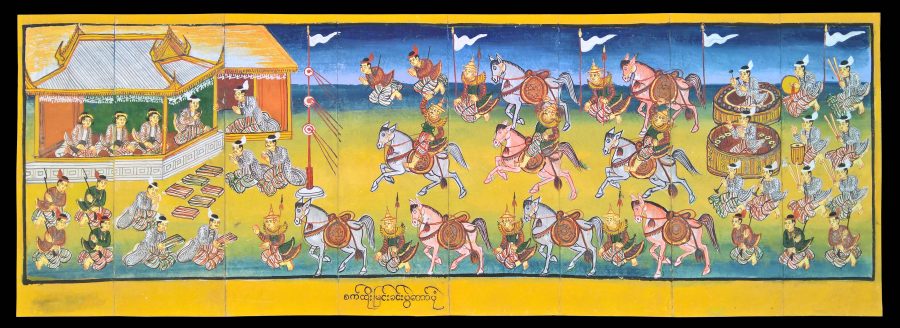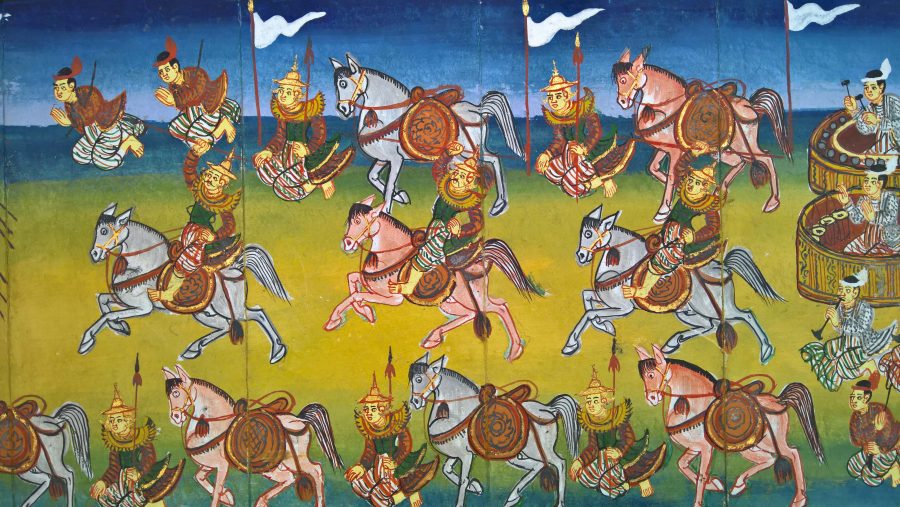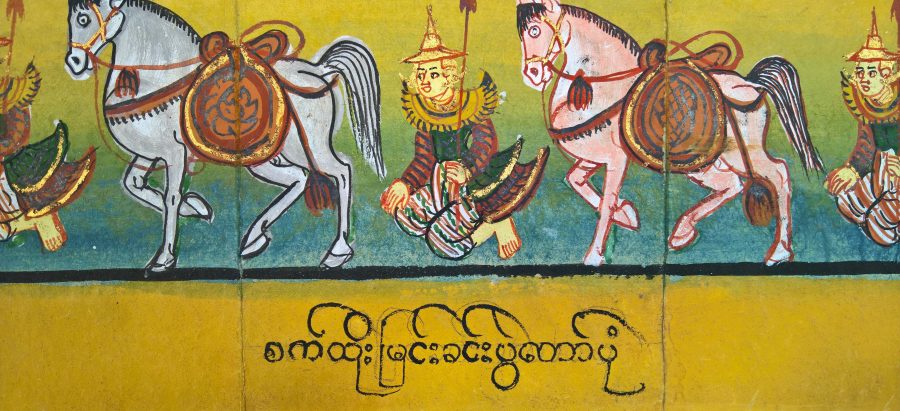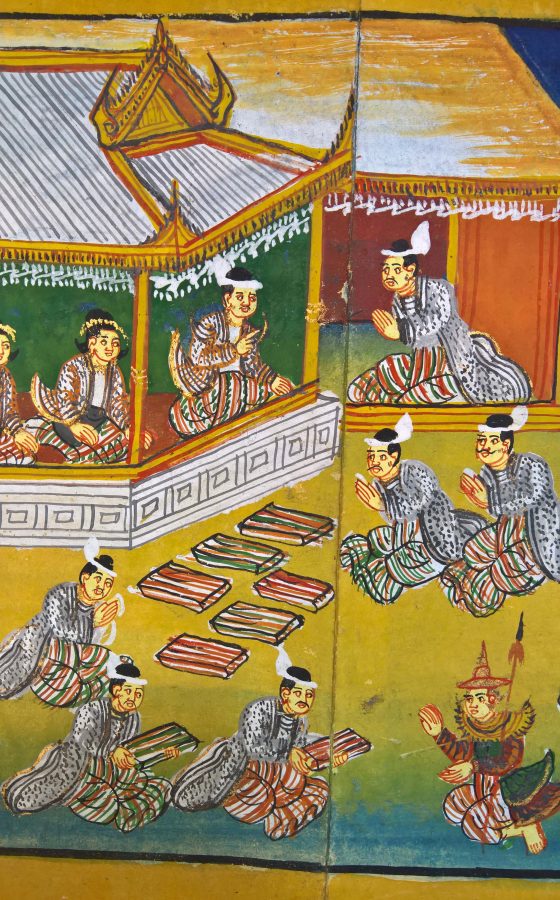This folded book or parabaik which comprises a single, long, rectangular piece of thick hand-made mulberry paper, is decorated on one side with a large scene, and is plain on the other side.
It is painted with water-soluble pigments and has eight folded panels. The scene might show an episode from the Konmara story, a jataka-inspired folk story, popular in Burma towards the end of the 19th century.
The scene includes 38 princely and noble figures and musicians, and nine horses.
The scene is surrounded by a yellow border and has two short segments of Burmese script beneath.
The earliest known parabaiks date to the mid-18th century and seem to have originated mostly from Mandalay. Originally, they were made for patrons associated with the court, but later, they were also commissioned by wealthier Burmese, to mark special occasions and ritual events.
The example here is in excellent condition. Almost certainly, it has been in the UK since colonial times which would account for its excellent state of preservation. The scene is complete but it is not clear if the manuscript might have been longer.
References
Fraser-Lu, S., & D.M. Stadtner, Buddhist Art of Myanmar, Asia Society Museum, 2015.
Murphy, S. (ed.), Cities and Kings: Ancient Treasures from Myanmar, Asian Civilisations Museum, 2016.
Schafer, D., et al., Myanmar: von Pagoden, Longyis und Nat-Geistern, Museum Funf Kontinente, 2014.





